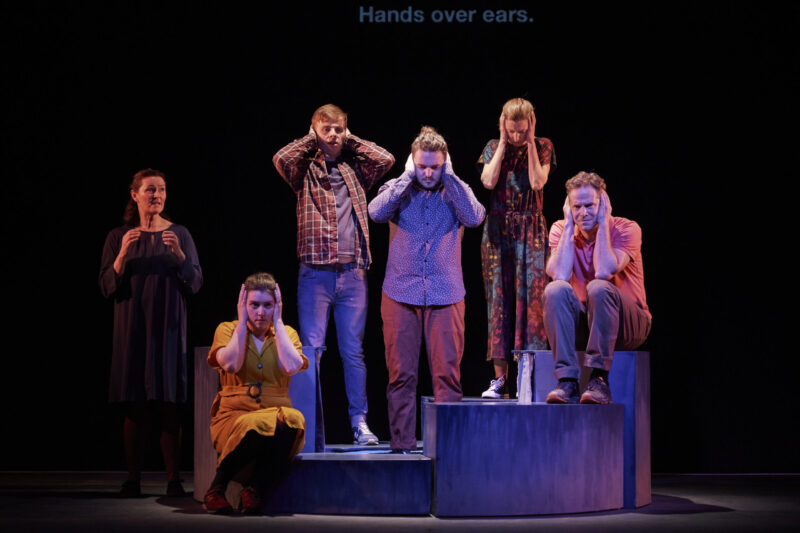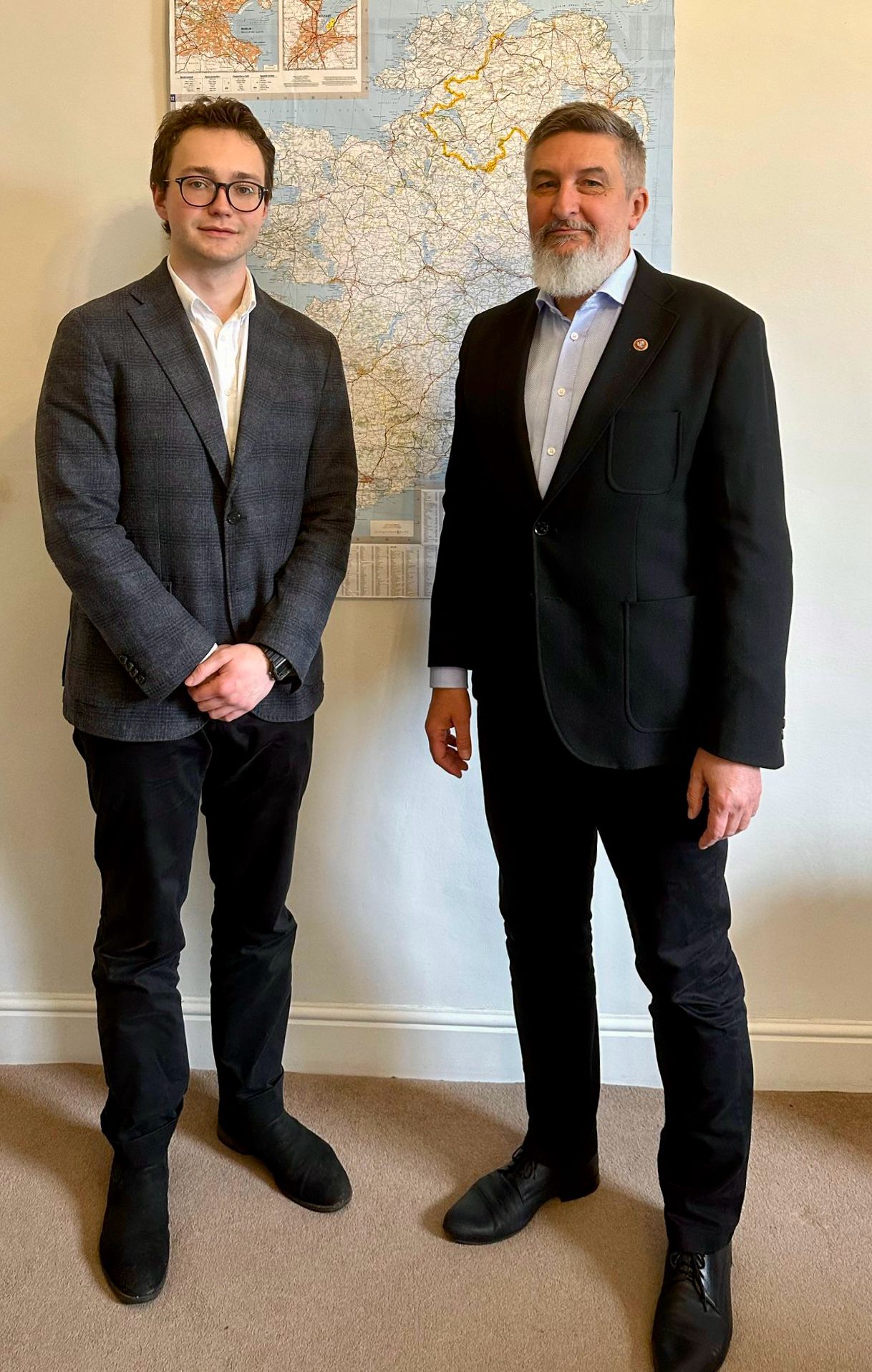
What I (Don’t) Know About Autism is a unique play, written by Jody O’Neill, which first premiered in the Abbey Theatre early 2020 and has recently been revived for a second run. The play follows several characters on the spectrum as they discuss the challenges they face finding love, interpreting social cues and generally coming to terms with disability. These themes are interwoven with informative sketches about different aspects of each character’s experience so that the audience can gain a better understanding of autism and all of its nuances.
The play also places an underlying emphasis on perspectives that are not heard. O’Neill demonstrates this through the story of Casper, a non-verbal autistic child who was murdered by his mother. The show takes great care to show that Casper understood the world around him, he just responded differently to it. One particularly harrowing scene saw the names of over 20 children who had been murdered by their parents or caretakers projected onto the stage – this moment of bleak silence that touched everyone in the audience.
The play successfully created a relaxed performance space – sensory inputs were reduced as much as possible, warnings were given if potentially upsetting material was coming up and audience members were free to move about. Every element of the performance was designed to be as accessible to autistic and neurotypical (non-autistic) people alike.
The relaxed performance format put me at ease and allowed me to better follow what was happening on stage without worrying about the way I was being perceived as an audience member. Interestingly, the majority of the audience kept to standard theatre etiquette, which signaled to me that the relaxed performance format is compatible with conventional theatre while also being more inclusive to neurodiverse or socially anxious audience members.
The portrayals of the various characters were clearly influenced by the experiences of each of the cast members with phenomena such as stimming and sensory overload featuring throughout. It’s difficult to portray something like stimming in a respectful manner as these actions have often been used to mock autistic people (Sia’s movie Music being one such example), but those moments in this show felt like authentic celebrations of autistic expression.
While the show’s tone conveyed the gravity of issues such as ableism and Applied Behaviour Analysis (ABA), it balanced these with moments of comedic levity. One such moment came in the form of a musical number about the history of autism. The song elicited laughter from the audience and was a welcome break from some of the heavier material in the play.
Also built into the show were two Q&A sessions lasting two minutes each and a post-show talk. In addition to adding audience interaction, they offered a brief interval for the audience to process any new information. I asked a question about how teachers who are already overworked by the system can best support children with autism, and the responses were remarkably interesting even within the confines of two minutes.
To gain more insight into the production process, I spoke to actor Jayson Murray over Zoom. The 22-year-old Trinity student has been performing since he was young and told me that he has always loved being onstage. He joined the team in early 2019 when the proposed crew were discussing how autism would be portrayed in the show, and was asked to get involved a few weeks later.
The cast and crew worked together to develop an authentic portrayal, drawing from everyone’s individual experiences. This resulted in a lot of flexibility for the cast, Murray explains: “Even though there is technically a base script that is being sold, the one that you see onstage isn’t necessarily exactly that, just because it has been developed for the cast that are doing it”.
The rehearsal process was different to most productions in that they were careful to build in breaks and supports for those who needed them. “It’s been eye-opening and very refreshing, actually”, Murray noted. “We’ve had a quiet space in rehearsal rooms and also backstage while the show is on, and that option was open to everyone, be they autistic or non-autistic.”
He also detailed some of his personal challenges learning to work with the new material and format. “One of the challenges I faced is the idea of having the show captioned behind us, you have to do a very different style of line-learning because people can spot if something goes wrong”, Murray explained.
“Another thing has been understanding the relaxed performance style we’ve incorporated into the show, so understanding that people might get up and move around or play a game on their phone, or stim, just be themselves, which is great… but something we’ve had to adjust to.” That being said, he was extremely enthusiastic about the concept of a relaxed performance and using the format to allow people to express themselves however they needed.
One of the things he identified which helped make the show more accessible to the cast and crew is the relaxed, comfortable atmosphere that was established throughout the production process. “Once it becomes a job, I think people forget the fact that there’s meant to be fun and creativity in those settings.” Another aspect Murray highlighted was the importance of open lines of communication between cast and crew. “To have built-in breaks and spaces and open lines of communication and to not have the distance between the production crew and the cast onstage [is extremely useful].”
If there is one thing Murray wants audience members to take away from the play, it is that not every autistic person is the same. “I hope that people will be able to learn and understand that not everybody… who’s sat next to you is the exact same, they might need to mooch about in their seat for a bit, they might just need to move, or they might need to stim because of sensory overload.”
He went on to say, “I think the thing with using the word spectrum is that people are kind of like ‘which end are you on’, but that spectrum is on a day-to-day basis or a moment-to-moment basis depending on the stimulus that you have around you. I think that’s one thing that I really like to try and get across where possible.”
What I (Don’t) Know About Autism was performed live in the Peacock Theatre from October 26th until November 6th and is currently available to watch on-demand until November 20th. Tickets can be purchased via the Abbey Theatre website.






